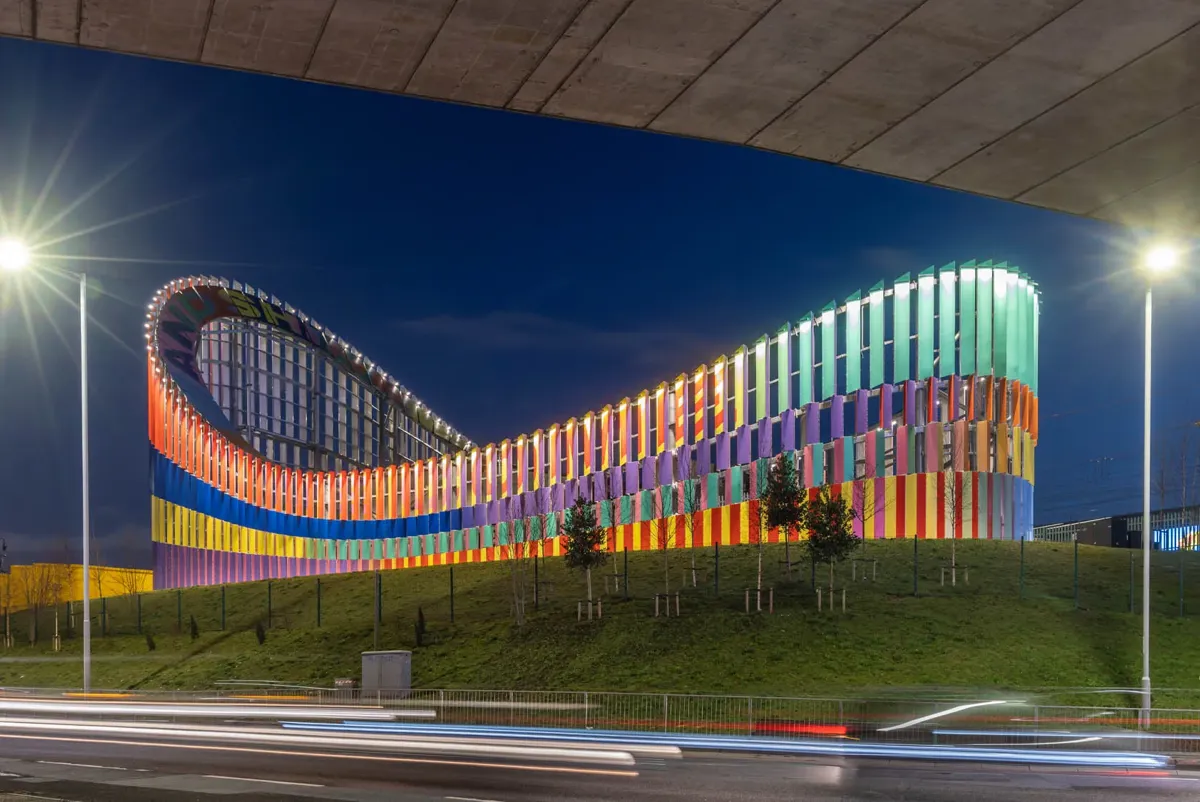Recover, reuse, reimagine: how we can reduce steel waste at scale
With a few changes to process, we can pivot towards a new, more sustainable, safe, commercial set of practices around the reuse of steel.

In the last decade, the architecture, engineering and construction industry has been increasingly vocal and honest about the level of waste it’s responsible for (and the considerable CO2 emissions those lost materials represent). As we walk past demolition sites in major cities, there’s long been a sense that we should be able to do more with the demolition materials – particularly the structural steel. In this article I want to make the case that a series of converging factors mean this is becoming a viable, commercial opportunity, and that with a few changes to process, we can pivot towards a new, more sustainable, still safe, still commercial set of practices around the reuse of steel.
Recycled… but not sufficiently reused
Statistics vary by country, but as it stands, around 87% of steel is recovered from demolished structures here in the UK. The issue is that only a small fraction of the recycled steel is reused in its high value form as structural sections in new buildings. This leads to our industry’s enduring appetite for brand new or virgin steel – a material that comes with a high CO2 emissions cost, from its production to its transportation. Steel is highly recyclable so this represents a major missed opportunity for an industry sector that needs to accelerate its transition to more sustainable practices. Why then is reuse not the norm?
Long embedded practices and preferences are a brake on change, from existing procurement processes to supply chain realities – but these can be overcome. Our recent work on the Brent Cross Town Substation in north London, was an opportunity to explore the normalisation of reused steel in an important infrastructure project. Here are a few of the issues we encountered and attempted to address, on a project that at completion comprised over 40% reused steel in its structure.
Market availability
Today, additional effort is required to find a suitable reclaimed section and demonstrate that it also meets the specification. Sometimes, but not always, this means higher costs. Clients, and contractors, are undeniably more familiar (and comfortable) with a procurement process that sources the specified grade steel, at the most competitive price, from the most reliable supplier.
Availability of reused steel remains limited, but supply is growing, as we discovered on the substation project. Working with Cleveland Steel and Tubes Ltd we were able to offer the client a solution where 42% of the structural steel was formed from reused steel, saving 91 tonnes of eCO2 and reducing overall eCO2 by around 40% compared to virgin steel.
For reuse to become an industry norm, the market as a whole needs to expand. How can we, as engineers, or as construction professionals, obtain more of it? In part the answer is by growing use of appropriate demolition, through specification and through client direction. Sometimes this can mean a growing willingness to pay for more complex and longer demolition activities and in other cases a more pragmatic approach to demolition recovery.
Take a steel beam, bolted to a column: in the past if we planned to reuse the beam we would need to unbolt it, requiring time and effort, particularly for bolts which have seized over many decades. Instead, to limit time and complexity, we can consider cutting the beam ends to avoid this task on site and provide beams in standard lengths.
Some of this involves greater upfront costs to clients, but should be compensated by CO2 savings further along the project lifecycle. Also, there can be cross-project savings – where demolition recovery of steel on project A benefits project B in terms of emissions reductions that are carried over.
For reuse to become an industry norm, the market as a whole needs to expand. How can we, as engineers, or as construction professionals, obtain more of it?
Darius Cook
Associate, Arup
Sourcing the steel
The process begins with an identification of currently available steel components – what’s available where and at what price? What can be recovered from demolition sites? At the moment this is a fairly inefficient task, requiring a certain time commitment. But we can imagine how the market will respond to meet this demand as the market for reused steel grows. A patchwork of steel component databases do exist – we can also foresee these consolidating into a few larger and more commercially relevant digital sources over time.
Clearly we need to do more to digitally record and tag components – so-called ‘materials passports’ remain an industry goal – so that future users can identify and reuse rather than sending materials to waste. However, there are other challenges to reclaiming and reusing steel that was formed 30-40 years ago, most of which can’t easily be addressed digitally. That said, we should still aim to start embedding data about steel components into the BIM models designers use, now and in future. This commitment should drive up reuse across the industry as a whole.
Appropriate and efficient uses
Reused steelwork obviously needs to undergo appropriate testing to validate its material properties, and reused steelwork is currently only permitted in certain types of structures, so it’s only a partial solution. Given the ongoing constraints to supply of reclaimed steel, uses need to be appropriate and efficient, with elements adopted in the most relevant role.
Here a ‘lean design’ ethos proves valuable. This demands that we always begin by asking – can we reuse and adapt the existing building? If not, can we reuse some elements of the existing structure? If that isn’t possible, it means designing new elements to use as little new material as possible. Reused steel has to slot into projects according to this equation.
At Brent Cross Substation we were able to find uses for some oversupplied steel sections from an earlier gas project – these then became the columns and bracing members of the structural frame. This decision was based on the sections being efficient for their use and the ease of their availability. Available circular sections could have been used for the other remaining elements (e.g. the cladding support members), however this would not have been efficient, and we didn’t want to use reuse steel simply for the sake of doing so. It’s going to be a project-specific judgement call on each and every scheme.

New working practices
The integration of used steel components into modern design and construction processes also requires a bit of adaptation among the different parties. Used steel procurement introduces a new partner into the supply chain. Closer collaboration will clearly be needed as reused elements are identified, tested and then integrated within the wider list of materials.
At Arup we’re keen to develop and define some demolition specifications for the industry to use – this should build confidence in the processes and practices that the players across the industry will need to adopt. By developing demolition phase steel specifications we should see an immediate increase in market availability.
As hinted above, another key advantage would be if there was a single, nationwide database of reusable steel. Although the availability of individual sections changes in the time between design and order, as a first step it would be valuable to have a directory of companies that are able to grade and stock reusable sections and to find the most typical grades, lengths and sizes they hold.
As noted, this unified database doesn’t yet exist, but this is an era when developing standards-based digital tools, run from the cloud, is a relatively cheap and technologically easy task. This single database, would also enable the integration of steel components into BIM models, bringing designers into the process. Ultimately it would streamline certification, build acceptance of the practice among developers and clients, and hopefully drive up the appeal of reused steel among designers and engineers.
Making a start
In our work with developer Related Argent on the Brent Cross Substation, we could see how open-mindedness, pragmatism and careful planning, can make steel reuse a much bigger part of the way we work. We’d love to see this confidence grow and the practice become a norm across the UK and in other regions. At Arup we’re always happy to share what we’ve learned on emerging practices, and this is one where the whole industry could and should be bolder. Do get in touch if you want to learn more.
Get in touch with our team





